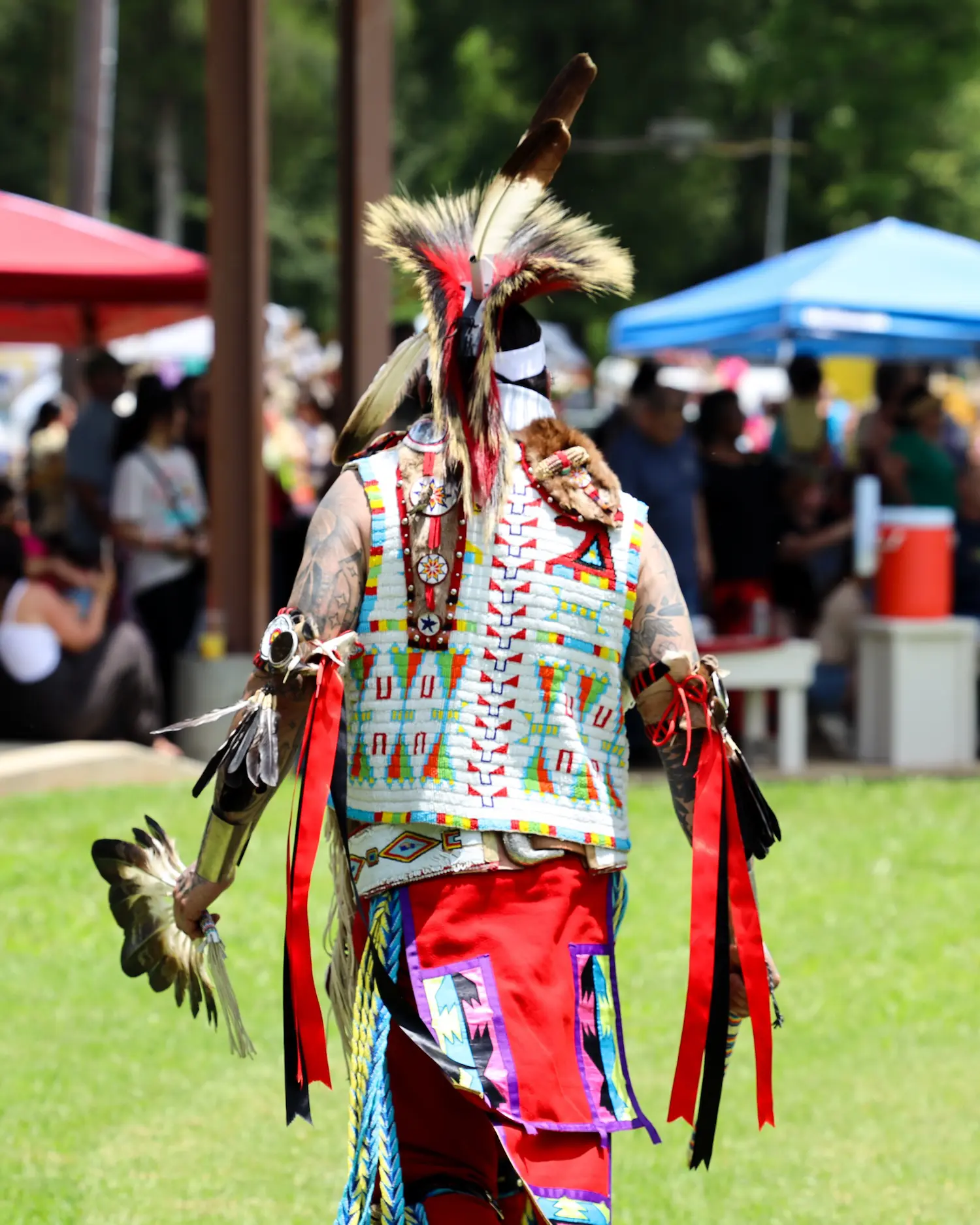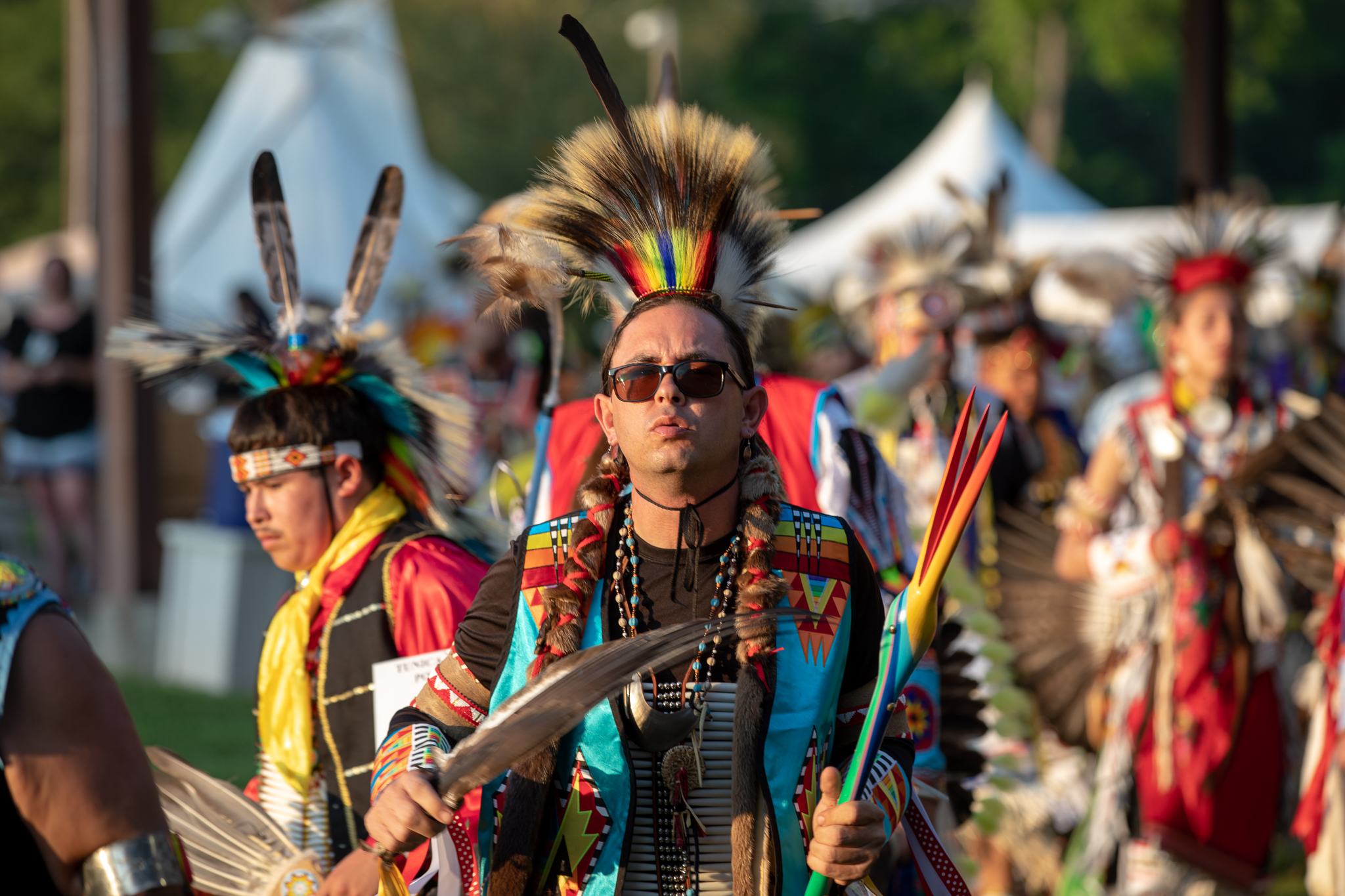
Echoes of Resilience: The Enduring History of Louisiana’s Tunica-Biloxi Tribe
In the heart of Louisiana, amidst the bayous and pine forests, lies a testament to unparalleled endurance, cultural richness, and the unyielding spirit of a people who have navigated centuries of change, conflict, and displacement. The Tunica-Biloxi Tribe of Louisiana, headquartered in Marksville, Avoyelles Parish, represents a vibrant, sovereign nation with a history stretching back millennia, a narrative interwoven with the very fabric of the North American continent. Their story is not merely one of survival, but of a profound resilience that has allowed them to reclaim their heritage, empower their community, and forge a prosperous future.
Ancient Roots: A Legacy Forged in the Landscape
The history of the Tunica-Biloxi Tribe predates European contact by thousands of years. Their ancestors were among the sophisticated mound-building cultures of the Mississippian Period, societies characterized by complex social structures, extensive trade networks, and impressive ceremonial earthworks. The Tunica, in particular, were known as astute traders and skilled potters, their influence radiating across the lower Mississippi Valley. The Biloxi, a Siouan-speaking people, occupied territories further east, along the Gulf Coast, and were also part of this rich indigenous tapestry.
"Our ancestors were here long before anyone else," states a tribal elder, reflecting a deep connection to the land. "Their footprints are in the soil, in the mounds, in the very water of the Mississippi." These early communities lived in harmony with the environment, utilizing its bounty for sustenance, crafting intricate tools, and developing complex spiritual and social systems that sustained them for generations.
The Cataclysm of Contact: Disease, Displacement, and Amalgamation

The arrival of Europeans in the 16th century marked a devastating turning point. Hernando de Soto’s expedition in the 1540s, and later the French explorations in the late 17th century, brought not only new trade goods but also previously unknown diseases like smallpox, measles, and influenza. These epidemics decimated indigenous populations, often wiping out entire villages and disrupting established social orders.
The Tunica, who had a strong presence near the confluence of the Mississippi and Yazoo Rivers, were among the first to engage with French explorers such as René-Robert Cavelier, Sieur de La Salle, and Pierre Le Moyne d’Iberville. Their strategic location made them key players in the burgeoning fur trade, acting as intermediaries between the French and other interior tribes. However, this proximity also exposed them to greater pressures.
As European colonial powers—France, Spain, and later Great Britain and the United States—vied for control of the continent, the Tunica, Biloxi, and other smaller tribes like the Ofo and Avoyel found themselves caught in the crosshairs of geopolitical conflict. Faced with escalating warfare, disease, and the relentless encroachment on their ancestral lands, these distinct groups began to coalesce, seeking strength and survival in unity. The Tunica, known for their diplomatic skills and trading prowess, often provided a rallying point for these displaced peoples.
By the mid-18th century, the amalgamated tribe, increasingly identifying as Tunica-Biloxi, had migrated south, eventually settling in the area around Marksville, Louisiana, a site that offered both fertile land for agriculture and a degree of isolation from the direct path of colonial expansion. This move, however, did not end their struggles.
A Forgotten People: The Long Road to Recognition
For much of the 19th and early 20th centuries, the Tunica-Biloxi, like many other indigenous communities in the United States, faced immense pressure to assimilate. Their traditional languages (Tunica, a language isolate, and Biloxi, a Siouan language), ceremonies, and customs were suppressed. They lived largely unnoticed by the federal government, often considered "extinct" or "assimilated" by officials who failed to understand the subtle but persistent ways in which tribal identity was maintained.
Despite the lack of federal recognition, the Tunica-Biloxi never abandoned their heritage. They continued to practice their traditions in secret, passing down stories, skills, and values through generations. Basket weaving, a highly prized skill among the Tunica women, remained a vital art form, with intricate designs preserving ancient motifs. Subsistence farming, hunting, and fishing sustained the community, while strong family ties and oral histories kept their cultural flame alive.
The mid-20th century, however, saw a renewed effort among tribal leaders to formally reclaim their rightful place. This period was marked by the tireless dedication of figures like Earl Barbry Sr., who would later become the tribe’s long-serving Chairman. Barbry, along with other community members, began meticulously gathering documentation—birth certificates, land records, and genealogical charts—to prove their continuous existence as a distinct, identifiable tribe.
The Tunica Treasure: Unearthing a Shared History

A pivotal moment in the tribe’s quest for federal recognition came not from government archives, but from the earth itself. In the late 1960s and early 1970s, an amateur archaeologist discovered a significant burial site on the tribe’s ancestral land near Marksville. What followed was a painstaking excavation led by Harvard archaeologist Jeffrey Brain.
This excavation unearthed what became known as the "Tunica Treasure"—an astonishing collection of artifacts, including European trade goods such as glass beads, brass kettles, muskets, and ceramic vessels, alongside traditional Tunica pottery and ceremonial objects. The sheer volume and diversity of the items, dating primarily from the 18th century, provided irrefutable proof of the Tunica’s active role as traders and their continuous occupation of the region.
"The Tunica Treasure was more than just artifacts; it was a Rosetta Stone for understanding their history and their central role in the colonial economy," Brain later noted. The discovery provided concrete, scientific evidence that bolstered the tribe’s claims, demonstrating their distinct cultural identity and historical continuity. After years of legal battles, the Tunica-Biloxi Tribe successfully repatriated the Treasure, which now forms the centerpiece of their acclaimed Tunica-Biloxi Museum & Cultural Resources Center, a powerful symbol of their heritage reclaimed.
Federal Recognition and a New Dawn
Armed with the historical and archaeological evidence, and driven by the unwavering commitment of their leaders, the Tunica-Biloxi Tribe’s petition for federal recognition gained momentum. In 1981, after decades of perseverance, the U.S. government formally acknowledged the Tunica-Biloxi Tribe of Louisiana, granting them the status of a sovereign nation.
"Federal recognition wasn’t just a piece of paper; it was a reaffirmation of who we are, a validation of our ancestors’ struggles and sacrifices," Earl Barbry Sr. often said. This recognition was a transformative event, opening doors to self-determination, the ability to govern themselves, manage their lands, and pursue economic development to benefit their people.
Rebuilding and Revitalizing: The Era of Self-Determination
With sovereignty came the responsibility and opportunity to build a brighter future. The tribe embarked on an ambitious journey of economic and cultural revitalization. In 1994, they opened the Paragon Casino Resort, a groundbreaking venture that not only created thousands of jobs but also generated the revenue necessary to fund vital tribal services.
The casino’s success allowed the tribe to invest in healthcare, education, housing, and infrastructure for its members. It provided scholarships for higher education, ensuring that younger generations could access opportunities their ancestors could only dream of. It also enabled the tribe to establish a modern governmental structure, complete with a tribal council, court system, and various departments dedicated to social services, environmental protection, and economic diversification.
Beyond economic development, the Tunica-Biloxi have placed a strong emphasis on cultural preservation. The Tunica-Biloxi Museum & Cultural Resources Center, housing the repatriated Tunica Treasure, serves as a beacon for cultural education and preservation. The tribe has also launched initiatives to revive the Tunica language, which was nearing extinction, and to teach traditional arts like basket weaving to younger generations.
"Our culture is not just history; it’s alive. It’s in our language, our art, our stories, and the way we care for each other," emphasizes a tribal cultural specialist. These efforts ensure that the rich tapestry of Tunica-Biloxi heritage continues to be woven, connecting the past to the present and guiding the future.
Looking Forward: Sustaining Sovereignty and Culture
Today, the Tunica-Biloxi Tribe of Louisiana stands as a model of indigenous resilience and self-determination. They actively participate in state and national affairs, advocating for Native American rights and contributing to the broader community. They face ongoing challenges, including adapting to economic shifts, preserving their ancestral lands in the face of environmental threats, and ensuring that cultural traditions thrive in an ever-modernizing world.
However, the lessons learned over centuries of hardship—the strength found in unity, the wisdom passed down through generations, and the unwavering commitment to their identity—continue to guide them. The story of the Tunica-Biloxi Tribe is a powerful reminder that history is not just a collection of dates and events, but a living narrative of human spirit, adaptation, and the enduring quest for self-determination. From ancient mounds to modern casinos, their journey is a profound testament to the power of a people who refused to be forgotten, and who continue to write their own vibrant future.


